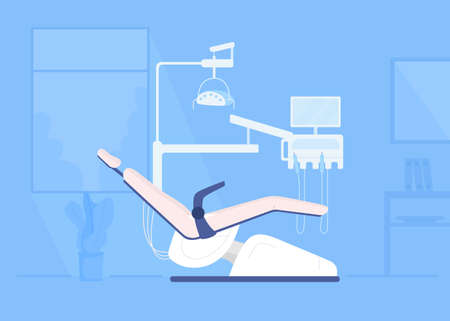Preparation for Your Recovery at Home
Effective recovery following male body contouring treatments in the UK begins with thoughtful preparation of your home environment. British guidelines stress the importance of creating a comfortable, safe, and supportive space to facilitate healing. Prior to your procedure, it is advisable to arrange essential items within easy reach—such as prescribed medication, loose clothing, water bottles, healthy snacks, and recommended wound care supplies. Consider investing in extra pillows or cushions to aid restful positioning and reduce strain on treated areas. Ensure your living space is tidy and clutter-free to minimise risks of trips or falls. It is also wise to pre-prepare meals or stock up on ready-made nutritious options, as mobility may be limited during the initial days. Seek support from family or friends who can assist with household tasks or errands; many patients benefit from having a reliable contact nearby for practical help or emotional reassurance. If you live alone, explore local community services, such as NHS-provided care advice or volunteer groups that offer post-surgical support. Planning for these needs ahead of time will help foster an environment conducive to optimal recovery and peace of mind.
2. What to Expect Immediately After Treatment
Following male body contouring procedures, its essential to be prepared for the typical symptoms and sensations that may arise in the immediate post-treatment phase. Understanding these expected responses not only helps reduce anxiety but also supports a smoother recovery process, especially when adhering to UK-based care standards and NHS guidelines.
Typical Symptoms in the First Few Days
| Symptom | Description | Duration (Approximate) |
|---|---|---|
| Swelling | Mild to moderate swelling around treated areas; part of the natural healing response. | 3–7 days, gradually subsiding |
| Bruising | Purple or blueish patches may appear, particularly in sensitive zones. | Up to 2 weeks |
| Soreness & Discomfort | A dull ache or tenderness, similar to muscle soreness after strenuous exercise. | First week, then improving |
| Numbness or Tingling | Temporary changes in skin sensation are common as nerves recover. | Several days to a few weeks |
| Mild Oozing/Fluid Drainage | If incisions were made, slight leakage of clear fluid is possible. | 24–48 hours post-procedure |
NHS-Recommended Pain Management Options
The British NHS suggests a measured approach for pain relief following body contouring:
- Paracetamol: First-line choice for managing mild discomfort. Gentle on the stomach and widely accessible at UK pharmacies.
- Ibuprofen or Other NSAIDs: Useful for both pain and inflammation. Take with food and check with your GP if you have any history of gastric issues or asthma.
- Avoid Aspirin: Unless specifically advised by your surgeon, as it can increase bruising risk.
- Prescription Medication: In rare cases where pain is severe, your consultant may provide short-term prescription analgesics — always follow the precise dosing schedule and never exceed recommended doses.
- Cooled Compresses: Applying a clean, cold pack (never ice directly) can help minimise swelling and soothe sore areas during the first 24–48 hours.
- Rest and Elevation: Resting with the treated area slightly elevated encourages blood flow and reduces swelling more efficiently — a simple yet effective home strategy endorsed by British clinicians.
When to Seek Medical Advice?
If you experience escalating pain not controlled by over-the-counter medication, signs of infection (such as redness spreading, warmth, pus, or fever), or sudden shortness of breath or chest pain, contact your clinic or local NHS service promptly. Early intervention is key for optimal outcomes and peace of mind during recovery.

3. Aftercare Instructions: Wound Care and Hygiene
Step-by-Step Guidance for Proper Wound Care
Following male body contouring procedures, meticulous wound care is essential to support optimal healing and minimise the risk of infection. Adhering to best practices, as recommended in UK clinical guidelines, can make a significant difference in recovery outcomes.
Step 1: Hand Hygiene
Before touching your wound or changing dressings, always wash your hands thoroughly with warm water and an antibacterial soap such as Carex or Dettol, which are widely available at local pharmacies like Boots or Superdrug. Dry your hands with a clean, disposable towel.
Step 2: Dressing Changes
Your healthcare provider will advise how often to change your dressing. Typically, this is done daily or when the dressing becomes damp. Use NHS-approved sterile dressings such as Melolin or Mepore, both accessible at most chemists. Gently remove the old dressing; if it sticks, moisten with saline solution (available from the pharmacy) to avoid damaging the skin.
Step 3: Cleaning the Wound
Cleanse the area gently using pre-packaged saline sachets or by making a mild saline solution (one teaspoon of salt in half a litre of cooled boiled water). Avoid using harsh antiseptics unless specifically directed by your clinician, as these can irritate healing tissue.
Step 4: Applying New Dressings
Ensure the wound is dry before applying a fresh dressing. Secure it firmly but not too tightly with medical tape such as Micropore. Do not use plasters on larger wounds, as they may restrict airflow and slow healing.
Maintaining Personal Hygiene
Avoid soaking wounds in baths or swimming pools until fully healed. Instead, opt for short showers, keeping the affected area protected with a waterproof covering if advised. Wear loose-fitting cotton clothing to promote airflow and reduce irritation.
When to Seek Further Medical Advice
If you notice increased redness, swelling, warmth around the wound, discharge that is yellow or green, foul odours, persistent pain, or if you develop a fever over 38°C, contact your GP or NHS 111 promptly. These may be early signs of infection requiring professional assessment. Never hesitate to seek advice if unsure—timely intervention ensures complications are managed effectively.
4. Physical Activity and Returning to Daily Life
Following male body contouring procedures, understanding when and how to safely resume physical activity is crucial for optimal recovery. The NHS and leading UK aesthetic bodies recommend a structured approach to reintroducing work, exercise, and daily routines, ensuring both safety and the best possible results.
Guidelines for Gradual Reintroduction
Resuming activities too soon can compromise healing and affect surgical outcomes. Below is a guideline table tailored to typical UK recommendations for staged recovery:
| Activity | Recommended Timeline | Notes |
|---|---|---|
| Desk-based work | 3–7 days post-procedure | If discomfort is minimal and pain is controlled with paracetamol or similar over-the-counter analgesics |
| Driving | 5–10 days post-procedure | Must be able to perform an emergency stop comfortably; check with your insurer before returning to the road |
| Light walking | 24–48 hours post-procedure | Encouraged early to reduce risk of blood clots; avoid brisk walking or hills initially |
| Light household chores | 1–2 weeks post-procedure | Avoid heavy lifting, vacuuming, or strenuous activity during this period |
| Low-impact exercise (e.g., cycling, gentle swimming) | 2–4 weeks post-procedure | Start with low intensity; monitor for swelling or discomfort and reduce if needed |
| High-impact exercise & weight training | 4–6 weeks post-procedure (or as advised by your consultant) | Return gradually; always follow specific advice from your surgical team as healing rates vary individually |
| Contact sports/heavy manual labour | 6+ weeks post-procedure (with clinical clearance) | Avoid until fully cleared by your healthcare provider to prevent injury or complications |
British Considerations: Workplace Support and Practicalities
The UK workplace often requires a fit note (“sick note”) if you are off work for more than seven days. Speak with your GP or surgical team if you need documentation. If you have physically demanding duties or commute via public transport, plan for phased returns—consider flexible working arrangements where possible.
Pacing Yourself for Recovery Success
A key British guideline is “listen to your body”—avoid comparing your recovery pace with others and prioritise rest when fatigued. Report any unexpected swelling, redness, pain, or fever to your healthcare provider promptly. Most importantly, adhere strictly to the aftercare plan provided by your clinic or NHS team for sustained results and complication-free healing.
5. Nutrition and Hydration for Optimal Healing
After male body contouring procedures, proper nutrition and hydration are essential for promoting effective healing and achieving the best possible results. Following British dietary guidelines ensures that your body receives the right balance of nutrients to support tissue repair and reduce inflammation.
Maintaining a Balanced British Diet
Focus on incorporating a variety of foods from each of the main food groups: lean proteins (such as chicken, fish, eggs, or beans), whole grains (like oats, brown rice, and wholemeal bread), dairy or dairy alternatives, plenty of fruit and vegetables, and healthy fats (such as olive oil or avocado). Traditional British meals—think grilled fish with steamed vegetables or a roast chicken dinner with plenty of greens—can be both comforting and nutritionally supportive.
Recommended Hydration Practices
Hydration plays a critical role in recovery by helping to flush out toxins and keep tissues supple. Aim to drink at least 6–8 glasses of water per day, as advised by the NHS. While tea is a staple in many British households, try to limit caffeinated drinks and opt for water or herbal teas where possible. Keeping a reusable water bottle handy can remind you to sip regularly throughout the day.
Essential Nutrients for Recovery
Certain vitamins and minerals are particularly important during post-treatment recovery. Vitamin C (found in berries, citrus fruits, and bell peppers) supports collagen production and wound healing. Zinc (present in meat, shellfish, seeds, and nuts) helps with cell repair. Omega-3 fatty acids from oily fish like mackerel or salmon can help reduce inflammation. If you have dietary restrictions or concerns, consult your GP or a registered dietitian for tailored advice.
By prioritising balanced meals and regular hydration according to UK health recommendations, you can enhance your body’s natural healing process and optimise the results of your male body contouring treatment.
6. Monitoring Progress and Follow-Up
Effective monitoring of your progress is a cornerstone of post-treatment care following male body contouring procedures in the UK. Both NHS and private providers adhere to a structured follow-up regimen, ensuring that your recovery is on track and any potential complications are promptly addressed. It is essential to keep a personal record of your recovery journey, noting changes in swelling, bruising, discomfort, or mobility. Most patients can expect certain milestones, such as a reduction in swelling within the first fortnight, gradual improvement in comfort and range of movement over four to six weeks, and visible results emerging within two to three months.
Scheduled follow-up appointments—whether through the NHS or a private clinic—play a critical role in this process. These reviews typically occur at regular intervals: initially within the first week post-procedure, followed by further check-ins at one month, three months, and six months. At these visits, your healthcare provider will assess wound healing, monitor for signs of infection or abnormal scarring, and discuss your progress towards aesthetic goals. You may also be asked to complete questionnaires regarding your wellbeing and satisfaction.
It’s important not to miss these appointments, as they allow clinicians to provide timely advice tailored to your individual needs and intervene early if concerns arise. Should you notice unexpected symptoms between scheduled reviews—such as excessive pain, fever, redness, or unusual discharge—it is advisable to contact your surgical team or GP without delay.
Proactive engagement with your follow-up plan is key to achieving optimal results and peace of mind during your recovery journey.
7. Recognising and Responding to Complications
While most men experience a smooth recovery following body contouring procedures, it is essential to be aware of potential complications and how to respond appropriately. This UK-specific guide will help you recognise warning signs, understand when to contact your local GP, and know how to access emergency services if necessary.
Common Warning Signs After Male Body Contouring
Some post-treatment symptoms are normal, such as mild swelling, bruising, and discomfort. However, certain signs may indicate a complication requiring medical attention:
- Excessive or worsening pain: Pain that does not improve with prescribed medication or suddenly intensifies.
- Significant redness or warmth around the treated area: These could be signs of infection.
- Pus or foul-smelling discharge: Any unexpected drainage from incisions should be assessed by a healthcare professional.
- Persistent fever (above 38°C): A raised temperature lasting more than 24 hours can signal an infection.
- Shortness of breath or chest pain: These may suggest a serious complication such as a blood clot.
When to Contact Your Local GP
If you notice any of the above warning signs (apart from emergencies), contact your local GP surgery during opening hours. In the UK, GPs act as the first point of contact for ongoing health concerns after treatment. For non-urgent issues, you can also call NHS 111 for advice out of hours. Be prepared to describe your symptoms clearly and mention your recent body contouring procedure.
Accessing Emergency Services
If you experience severe symptoms—such as difficulty breathing, severe chest pain, heavy bleeding that will not stop, or sudden loss of consciousness—call 999 immediately or go to your nearest Accident & Emergency (A&E) department. Do not wait for a GP appointment in these situations; prompt intervention could be life-saving.
Your Role in Recovery
Your vigilance plays a critical role in achieving optimal results and ensuring your safety after male body contouring. Keep all follow-up appointments, communicate openly with your care team, and never hesitate to seek help if something feels amiss. By staying informed and proactive, you’ll support both your recovery and long-term wellbeing according to best British clinical practice.


